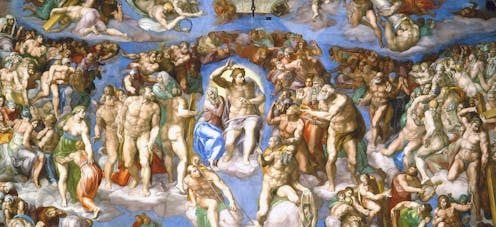Harold Bloom's (not so) influential idea at 50
- Written by Benjamin Madden, Lecturer, Department of English, Creative Writing and Film, University of Adelaide

Joshua Cohen’s ribald campus novel The Netanyahus (2021), winner of the Pulitzer Prize, is set during the winter of 1959-60. It depicts Ben-Zion Netanyahu, father of the current Israeli Prime Minister, during an itinerant phase of his academic career.
Netanyahu applies for a position in the history department at the fictional Corbin University (read Cornell). Because Netanyahu is Jewish and writes on the fate of Iberian Jews in the late middle ages, the complacently prejudiced WASP who presides over the history department (and whose correspondence is scented with spilled lime juice intended for his gimlets) entreats Ruben Blum, the only Jewish member of the faculty, to join the hiring committee.
Ruben, whose passage from the Yiddish-speaking enclaves of the Bronx to gentile-dominated academia represents the triumph of one version of assimilation, acquaints himself with Ben-Zion’s blood-soaked history of the Inquisition in ecstatic all-night reading sessions that bring him face to face with that which assimilation represses: an implacable, transhistorical antisemitism from which Zionism is the only escape.

















